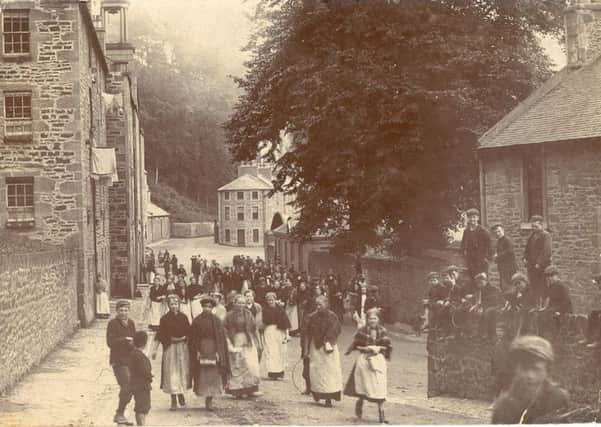Work on £1.5m New Lanark restoration set to begin


Now work is set to begin to transform the final run-down tenement block at the heart of New Lanark’s world heritage site.
Seven of the eight former millworkers’ homes will be restored to their original use while the eighth will become home to a 3D attraction offering visitors the chance to retrace the lives of the former residents.
Advertisement
Hide AdThe Heritage Lottery Fund has agreed to provide £1.5m to pay for a restoration of the “Double Row” tenements, which have been lying vacant since the last family moved out in the 1970s and are said to be in a “poor and deteriorating” condition.
A wider £4 million project will safeguard the future of other buildings around the site under a blueprint drawn up by the New Lanark Trust, which was formed more than 40 years ago to prevent demolition of the village.
An interactive mobile phone app will also be developed to help visitors under the historical development of the village, which was originally founded in 1785.
Its cotton mill, which was powered by water from the River Clyde, was to become the biggest in Scotland and remained operational until 1968.
At one point more than 2000 people lived or worked at the mill, under the management of Robert Owen, the son-in-law of New Lanark’s founder David Dale.
Owen improved the conditions, facilities and services for his workers, introducing ideas like childcare, education, healthcare and cooperative shopping.
Advertisement
Hide AdTrust director Lorna Davidson said: “We are thrilled to receive this significant grant award from the HLF which will enable us to realise our long-standing aspiration to complete the restoration of the former millworkers’ housing within this internationally important site.
“This project will fulfil our vision to maintain the historic village as a living, working community with a resident population.”
Advertisement
Hide AdMeanwhile the HLF has confirmed it will be funding a bid to turn a former Nazi prisoner of war camp in Perthshire into self-catering accommodation.
Ten Nissen huts at the Cultybraggan camp, which was built in 1941 and could accommodate up to 4500 inmates, will be converted under a £600,000 project, which the HLF is putting £338,500 towards.
Sharon Rice-Jones, acting chair of the Comrie Development Trust, which bought over the camp eight years ago, said the project was attract over 15,000 visitors after five years, creating the equivalent of 20 full time jobs and boosting the local economy by up to
£2million.
She added: “This grant brings us closer to the prospect of securing the future of 10
category B-listed Nissen huts within the best preserved POW Camp in Scotland, for self-catering accommodation on behalf of the local community and those that were stationed there.”
The HLF has also agreed to put £750,000 towards a £4 million dance studio planned for the arts centre which has been created in Glasgow’s former fishmarket.
Advertisement
Hide AdThe iconic Briggait building, which dates back to 1873 and is already home to artists’ studios and workshop spaces, will soon have a flying trapeze installed, along with facilities for circus, street theatre and other physical performance.
Colin McLean, head of the Heritage Lottery Fund in Scotland, said: “These buildings are incredibly different.
Advertisement
Hide Ad“What they have in common is that they are part of Scotland’s history and that, sadly, they are all in a semi-derelict state.
“This will not only help secure their future, it will bring enjoyment and learning to very many people and a boost to their local economies.”